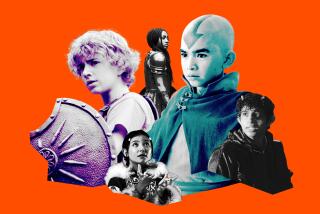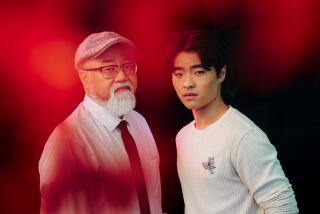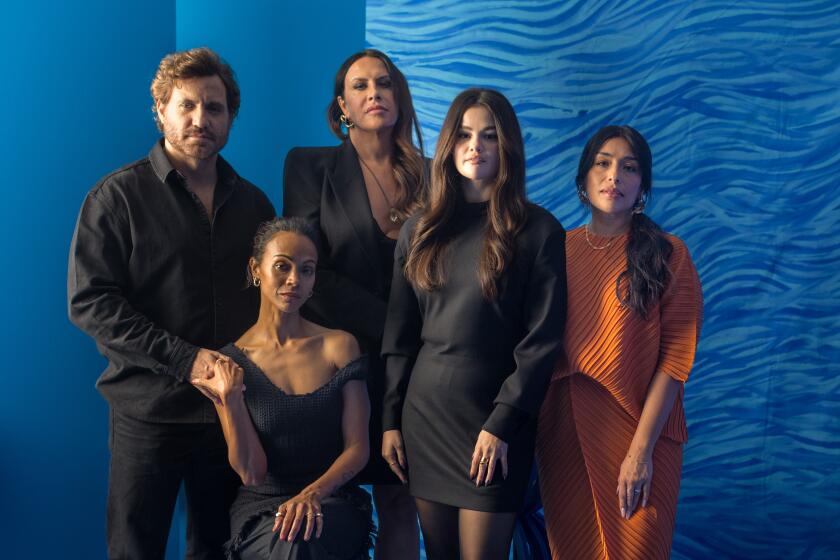Movie review: ‘The Last Airbender’
If ever a film was born under a bad sign, “The Last Airbender” is it. As the blues lyric goes, if it didn’t have bad luck, it wouldn’t have any kind of luck at all.
Not only does this live-action feature written and directed by M. Night Shyamalan have to weather comparisons with the hugely popular (and DVD-available) animated TV series that inspired it, it lost the first word of its title — “Avatar” — when a certain other film used it first.
Then “The Last Airbender” irritated fans by changing its trio of heroes from Asian to white and weathered the inevitable suspicion that goes with both a late conversion to 3-D and a studio decision to keep the film away from journalists and critics until close to the last minute.
It would be nice to say that this story has a miraculous Hollywood ending and that “The Last Airbender” beat those long odds, but that is not to be. By specifically critical and broadly adult standards, this film is undoubtedly a disappointment, but it is disappointing in a way that its intended audience may not notice.
For more than most films, “Airbender” is made for a 10-and-younger audience and a 10-and-younger audience alone. Unlike the recent “Percy Jackson” saga and most nominal films for children, which shoehorn in teenage material and secretly want to be hooking adults as well, “Airbender,” whether intentionally or not, is pegged almost exclusively to a small-fry state of mind.
Echoing the Nickelodeon TV series created by Michael Dante DiMartino and Bryan Konietzko, “The Last Airbender” takes us to a self-contained mythic universe inhabited by four tribal peoples: the air nomads, the water tribe, the earth kingdom and the fire nation. Each group has chosen people in it called “benders” who can, yes, bend their particular element to their will.
In the best of times, these nations live in harmony under the guidance of an avatar, a rare individual who can bend all four elements and keeps balance in the world by consulting with animal spirits ordinary folks can’t communicate with.
The last 100 years, however, have not been the best of times. The avatar has disappeared, and in his absence the bellicose fire nation, ruled by the unpleasant Fire Lord Ozai ( New Zealand’s Cliff Curtis), has taken it upon itself to attempt to rule the world.
“Airbender” begins with Sokka (“ Twilight’s” Jackson Rathbone) and Katara ( Nicola Peltz), a young brother and sister of the Eskimo-like northern water tribe. He is an everykid; she is a waterbender still learning to control her powers.
Out amid the ice floes of their world, Sokka and Katara come across Aang ( Noah Ringer), a young boy who looks like a baby Dalai Lama imprisoned in an iceberg. Not only does Aang have tattoos on his bald head outing him as the world’s last airbender, he is revealed to be the missing avatar that peace-loving people have been yearning for.
Naturally, the fire nation doesn’t take this news sitting down and, soon enough, two separate forces try to capture Aang. The super-evil Commander Zhao ( Aasif Mandvi) is the stop-at-nothing type, while young Prince Zuko (“ Slumdog Millionaire’s” Dev Patel), the Fire Lord’s exiled son, wants to do the deed to get back into his father’s good graces.
“The Last Airbender’s” Kids-R-Us intentions are most visible in the film’s determinedly unsophisticated dialogue, uninspired interchanges that not only echo the language of the cartoon series but also put one in mind of the back-and-forth of such 1950s kids shows as the “The Adventures of Spin and Marty” episodes of Walt Disney’s “The Mickey Mouse Club.”
Similarly, though they keep the plot moving along, nothing about the film’s functional visual effects makes a major impression, not the 3-D transfer, which adds very little to the proceedings, or even the fierce battleships of the fire nation, reminiscent though they are of the steamships that turn up in Hayao Miyazaki’s epics.
Despite Aang, Katara and Sokka being played by white actors, “The Last Airbender” retains the Asian feeling of the original shows, including liberal doses of martial arts, tai chi, Buddhist philosophy and Tibetan religion.
In fact, if there is anything that is intended to resonate with adults, at least parents of the New Age persuasion, it is the philosophical truisms that dot the dialogue, lines like “water teaches us acceptance,” “you must let anger go,” “there is no love without sacrifice” and the ever-popular, “is there a spiritual place where I can meditate?”
Speaking of truisms, it is one of Hollywood’s articles of faith that films that don’t intentionally hook parents never get a chance to please kids. With a sequel to this picture and a possible trilogy already in the planning stages, it will be interesting to see if “The Last Airbender” proves that rule or breaks it.
More to Read
Only good movies
Get the Indie Focus newsletter, Mark Olsen's weekly guide to the world of cinema.
You may occasionally receive promotional content from the Los Angeles Times.











